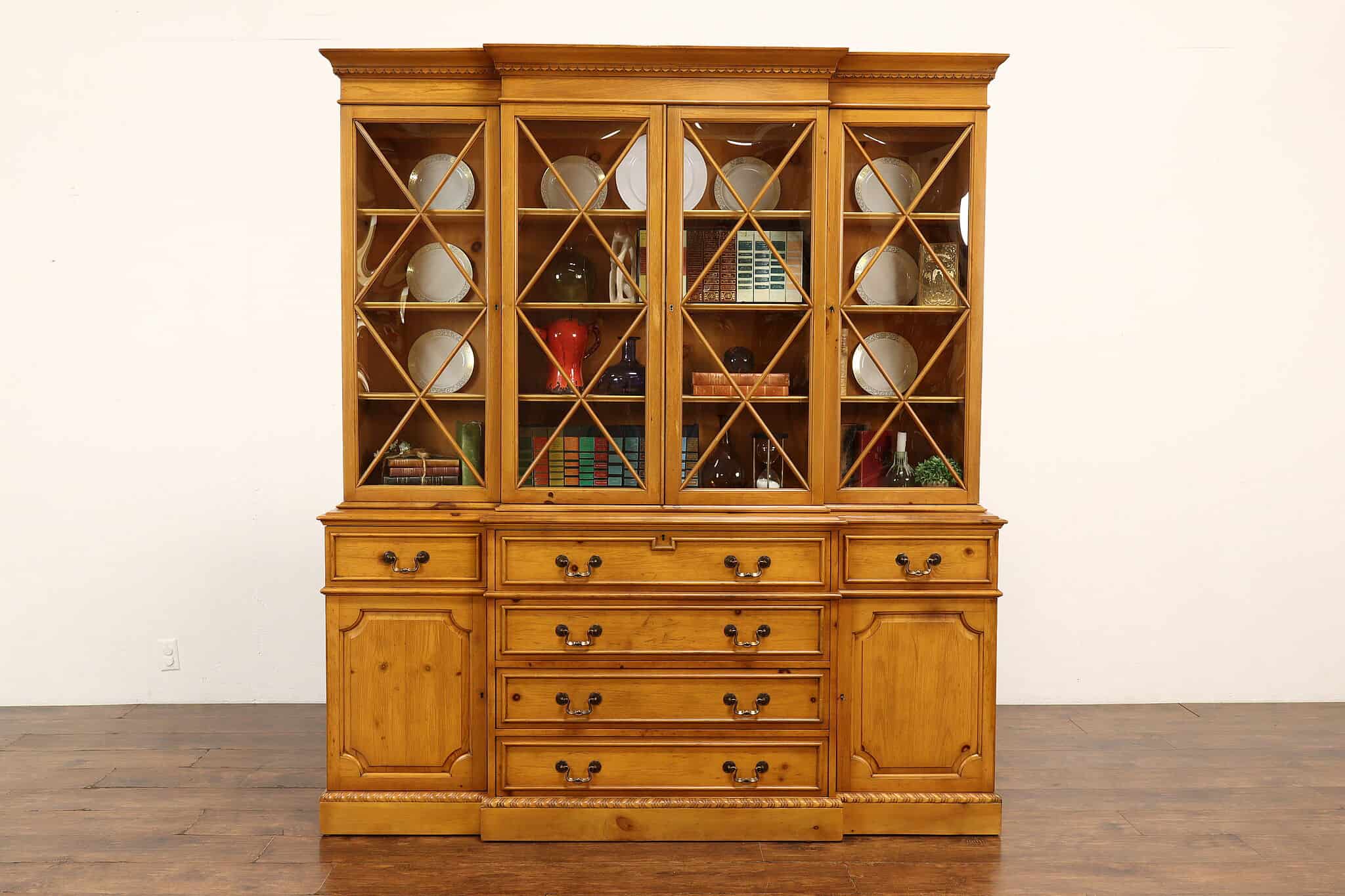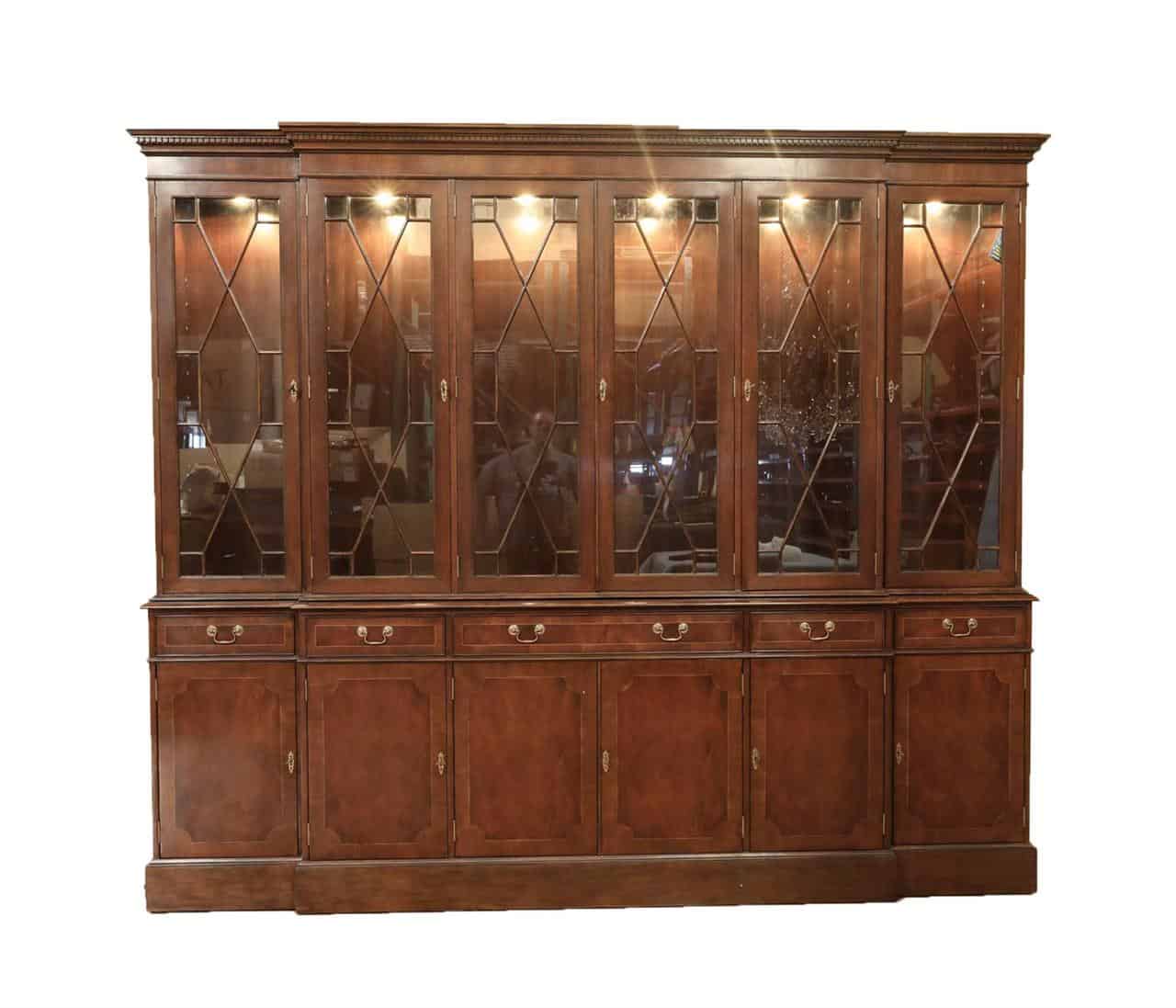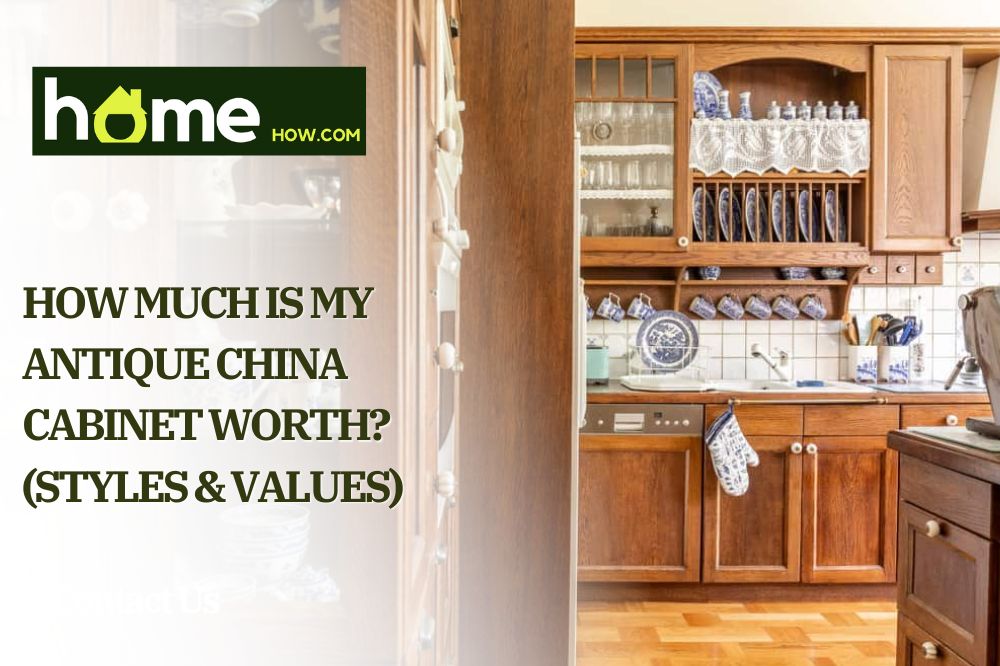A nice china cabinet in the dining room is inarguably the best way to keep your fine china safe while still on display. It’s also perfectly understandable if you’re thinking about moving or selling your china cabinet, however, especially if you don’t actually have much china in it anyway.
These cabinets are usually quite large, after all, which can be a problem if you’re trying to renovate your home or you want to free space for something else. What’s more, if your china cabinet is an antique too, it can fetch you a pretty nice price at your local antique store. So, if you’re wondering how much is my antique china cabinet worth, here’s a quick guide on how to ascertain that.
How Can You Know If Your Old China Cabinet is Really Antique?
Unfortunately, not every china cabinet is an actual antique, let alone worth a particularly significant sum of money. So, before we can discuss how much you can expect to get if you sell your china cabinet, we must first figure out if it really is an antique or not.
This doesn’t mean that your cabinet needs to be from all the way back in the early 1600s, of course. A china cabinet made in the 18th century or the 19th century is also very much an antique.
In fact, items of any kind are generally considered “antiques” if they are over 100 years old, so even a china cabinet made in the early 20th century can qualify for that label. Anything younger than that would be vintage rather than antique, however, as things are considered vintage if they are somewhere between 50 and 100 years old.
So, how exactly can you date your china cabinet with at least a relative certainty? Here are 6 things to look at and do:
1. Look for an identifying label or mark
The first thing to look for would be whether there are any identifications on the cabinet – maker’s marks, labels, date of production numbers, and so on. Contrary to popular belief, these sorts of identifiers aren’t really new – craftspeople centuries and even millennia ago often marked their creations.
Granted, those labels or markings weren’t as standardized as they are today but they were still done anyway and are the easiest way to figure out whether your china cabinet is antique and how much so.
2. Does the wood look handmade?
If the cabinet doesn’t have a label or you’re having trouble figuring out what it means, something else you can look into is the wood itself. Does it look handmade? Are there any variations in the wood on the different sides and surfaces of the cabinet? Does the finish look the same or slightly different in different places?
While this isn’t a fool-proof criterion, if there are noticeable variations in the wood’s finish, this likely at least means that it wasn’t machine-made. So, if not antique, it’s probably at least vintage.
3. Does the cabinet have a certain style?
The style of a china cabinet can also tell us a lot about it. Furniture used to have distinct styles based on the era it was made in. This is less so the case today as most things are machine-made and mass-produced – you can find furniture in every imaginable style today.
Back in the day, however, furniture had differing styles depending on its time, similar to how paintings, sculptures, literature, and other art pieces did. So, identifying the artistic style of your old china cabinet can give you a hint as to when it was made. To do that, it’s often enough to simply take a picture of it and post it in a relevant forum.
4. Look at the metal pieces – are they antique?
If your china cabinet has a lot of metal pieces, then it’s likely not particularly old – antiques rarely had that much metal hardware on them because back then this wasn’t utilized as much – instead, things such as dovetail joints were widely used.
If there are some metal joints here and there, however, that isn’t necessarily a disqualifying factor. It could be helpful if you inspect the metal hardware for any markings and labels too as that can be a great way to date the china cabinet.
5. Check the glass too – is it wavy? Are there air bubbles? Is it marked as antique?
The glass on china cabinets can be very useful for identifying them as antiques. That’s because the glass in the past used to be blown and hand-rolled, not machine-made like today.
So, if the glass doors on your cabinet have the occasional waves or air bubbles in them, this is a good indicator that your cabinet is indeed quite old.
6. Consult with a professional
If all else fails, you can always consult with an appraiser too. Sellers often don’t trust a random antique dealer that contacts them but getting in touch with the American Society of Appraisers or the Appraisers Association of America can help you get an accurate estimate of your china cabinet’s value.
6 Main Types of China Cabinets

One of the first things you’d want to determine is exactly what type of china cabinet you have – this will help you figure out what to research as well as what the general price range is going to be as some types are more expensive than others. Naturally, there are many types and sub-types, but the following 6 are the main broader china cabinet categories:
- Hutch-style china cabinet – a top glass door section divided from the bottom enclosed section via an open space middle section. Usually sells between $500 and $2,500 if it’s in good condition.
- Breakfront china cabinet – 3 main glass sections at the top with the middle one “breaking” ahead of the two shallower sections to its sides. The bottom part is typically enclosed. Usually sells between $500 and $2,500 if it’s in good condition.
- Step back china cabinet – the most common style, includes a top with two glass doors and an enclosed bottom portion. Like the breakfront, the step back usually sells between $500 and $2,500 if it’s in good condition.
- Corner china cabinet – designed to fit in corners, so their back is angled instead of straight. Otherwise, the design is similar to that of a step back cabinet. Often sells over $1,000 but rarely higher than $2,000.
- Curio china cabinet – glass sides and front, usually with a mirrored back. There is no enclosed bottom part. Often sells over $1,000 but rarely higher than $2,000.
- Bow-front or curved glass china cabinet – a curved glass front, usually with only one opening and the rest of the glass remaining stationary. Can sell for over $3,500 if it’s old enough as well as in a good condition.
How Much is My Antique China Cabinet Worth?

So, with all of the above out of the way, let’s try and figure out how much your antique china cabinet is worth.
- The type and style of the cabinet – because some types or styles are just more common than others, the latter will almost always fetch a higher price than the former.
- The age of the cabinet – truly antique and well-preserved china cabinets are always in high demand for collectors and fans, so, there will always be a big price difference between an early 20th-century cabinet and one that was made in the 19th, 18th, or even an earlier century.
- The condition it is in right now – a cabinet is meant to be functional, after all, so a high-quality china cabinet is one that is in a good condition and can be used perfectly well but also looks great.
- The materials used – oak, mahogany, walnut, maple, cherry, and types of wood were all frequently used in antique china cabinets. Some are more valuable than others, however, so you can always expect a mahogany cabinet to cost more than a walnut one.
- Special features – china cabinets can have all sorts of special features, interesting designs, decorations, inlays, and other such details that will often boost the price above the average or the expected.
In Conclusion
An antique china cabinet may very well be worth anywhere between a few hundred to a couple of thousand dollars or even more if it’s in a good condition. The exact number will also depend on its style, age, and specific physical characteristics.
Still, suffice it to say that if your china cabinet is a genuine antique, it definitely shouldn’t be thrown away – even the low end of that price range is usually worth the time to look for an avid antiques collector or shop to take it off your hands.
